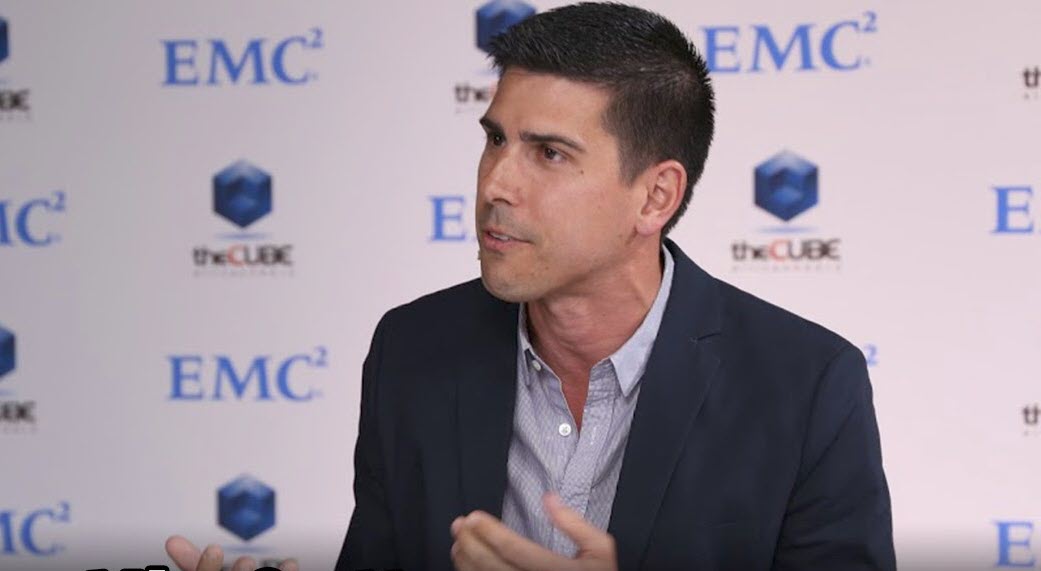 CLOUD
CLOUD
 CLOUD
CLOUD
 CLOUD
CLOUD
A lot of VMware Inc.’s customers view it as what it was in the past: a company that “virtualizes” hardware to make data centers more flexible and efficient. Kit Colbert, chief technology officer of VMware’s cloud platform business unit, is here to tell them the company isn’t living in the past.
“It’s important to understand how far we’ve come from that,” he said in an exclusive interview with SiliconANGLE. Indeed, anyone who has watched VMware over the last few years would agree that the company today looks little like the one that became synonymous with server virtualization a decade ago.
Having failed to crack the top tier of public cloud platform vendors with its own offering, VMware three years ago pivoted to a multicloud strategy, signing a landmark deal with Amazon Web Services Inc. and following up last year with a partnership with longtime rival Microsoft Corp.
VMware will convene its annual global cloud briefing this morning to outline its strategy for the next year. SiliconANGLE caught up with Colbert ahead of the event.
As the dominant supplier of virtualization technology in the data center, VMware has a strategy to leverage that strength to make its software-defined data center platform the place where customers can run any workload with the promise of hybrid and cross-cloud portability
“We like to think of ourselves as the Switzerland of hybrid cloud,” Colbert said. “We already have hundreds of thousands of customers who are running our platforms and have their apps there. They should be able to move to new locations without any modification.”
The company’s hybrid cloud strategy centers on its proliferating its software-defined data center platform “to as many locations as possible so wherever customers want a workload we can provide a consistent platform,” he said.
Some people gave up on VMware after its own public cloud platform failed, but the company has come storming back as something of a power broker in the multicloud landscape. “I think that for the next five years, VMware is going to be one of the companies that shapes the future of the cloud,” Peter Burris, chief research officer and general manager of Wikibon, SiliconANGLE Media’s research arm, said last summer.
VMware has accelerated its cloud-centric migration with several acquisitions, including Bitnami Inc., Heptio Inc., CloudHealth Technologies Inc. and Wavefront Inc. The Wavefront and CloudHealth purchases are the building blocks of VMware’s emerging multicloud strategy. “Our efforts are to make hybrid cloud as consistent as possible and to provide consistent infrastructure in the public cloud,” Colbert said.
Customers have now bought fully into the cloud model, the CTO said. Now they want everything to look like a cloud. VMware’s hybrid approach “is all about giving them cloud as a model wherever they want it” without extensive re-platforming, Colbert said.
Today’s road to the cloud increasingly involves the use of the portable, integrated operating environments called containers. Once seen as a threat to VMware, containers are now just part of any information technology organization’s cloud migration toolkit, Colbert said.
“We don’t think it’s a matter of VMs versus containers; we think it’s both,” he said. Chief Executive Pat Gelsinger last week claimed that VMware is now the second-largest contributor to the Kubernetes container orchestration project at the Cloud Native Computing Foundation.
“Over time it has to become less about the hypervisor and more about the whole equation,” Colbert said. “We’re doing a ton or work in containers.”
The message to customers is to “standardize infrastructure, have consistent operations and when something else comes along you use it,” he said. “Fundamentally we want to be a powerful infrastructure layer that sets customers up for success not just with existing workloads but with new technologies that they can onboard with a consistent platform,” he said.
Numerous competitors are attacking the problem of multicloud integration, and Colbert said there’s room for everyone. “It’s bigger than any single company,” he said. VMware will use partnerships to fill out its own offerings, particularly in areas where it doesn’t compete, such as hardware. “It takes a village to solve these problems,” he said.
Asked if infrastructure-as-a-service providers are enabling or standing in the way of their customers multicloud aspirations, Colbert said they’ve largely been cooperative because the volume of on-premises workloads that still haven’t migrated is so vast.
Enabling customer flexibility “benefits them because they can get those workloads,” he said. “It benefits us because we want customers to use SDDC and it benefits customers because they get the benefits of both.”
VMware is doing something right. Purchased for $625 million by EMC Corp. in 2004, it’s now worth that 100 times that much.
Support our mission to keep content open and free by engaging with theCUBE community. Join theCUBE’s Alumni Trust Network, where technology leaders connect, share intelligence and create opportunities.
Founded by tech visionaries John Furrier and Dave Vellante, SiliconANGLE Media has built a dynamic ecosystem of industry-leading digital media brands that reach 15+ million elite tech professionals. Our new proprietary theCUBE AI Video Cloud is breaking ground in audience interaction, leveraging theCUBEai.com neural network to help technology companies make data-driven decisions and stay at the forefront of industry conversations.